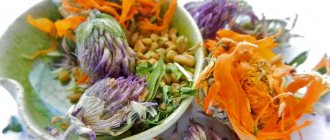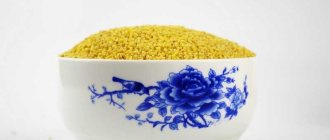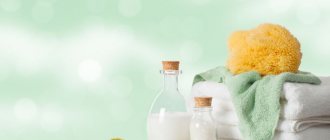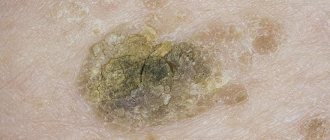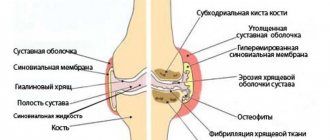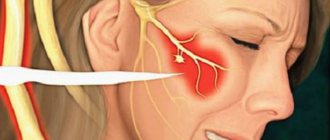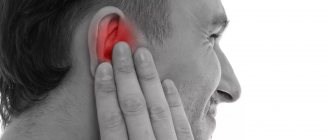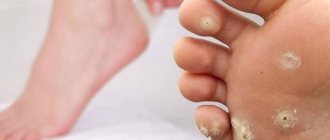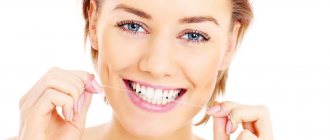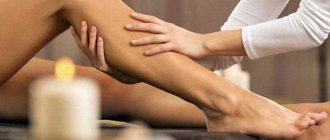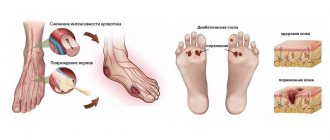Ringworm is often referred to as a dermatological disease that is caused by a fungal or viral infection. It manifests itself as a skin rash with itching and the onset of inflammation. The best therapeutic effect is achieved at the first stage of manifestation. Almost any lichen can transmit infection to another healthy organism.
Overall, dealing with the viral trigger is of utmost importance. But natural methods cannot always give a positive effect, namely, completely restore the skin. Therefore, for maximum effect, it is better to combine folk remedies with official medicine . Although there are quite a lot of cases when the skin is completely restored after using folk remedies.
Alternative medicine offers many tools to treat shingles in people. Let's look at the most effective and popular methods.
Treatment with birch tar
Birch tar is an effective remedy in the fight against dermatological diseases, including lichen. It is used not only in folk medicine, but also in official medicine. For example, the well-known tar soap and Vishnevsky ointment contain birch tar.
This is a proven remedy in many ways, suitable for both children and adults. Scientists have found that it contains substances that can suppress unfavorable microflora, promote skin healing and have an antiseptic effect.
Effective recipes based on birch tar:
| Ingredients | Cooking method |
| Tar, oil | The ingredients should be taken in a 1:1 ratio and mixed thoroughly. Apply to affected areas of the skin and leave for 6-8 hours. |
| Tar, ash | To prepare this product, you need ash from burnt birch logs. Tar and ash will be required in a ratio of 3:1. Treat the skin with the prepared composition every 2-3 hours. |
| Tar, fish oil | The components should be taken in a ratio of 3:1. Soak a gauze bandage with the mixture. Apply a compress to the lichen spots and leave for 2-4 hours. |
| Tar, salicylic acid | These elements must be taken in equal parts. Apply to sore skin every 2-3 hours. |
Important to remember! Birch tar has a sharp, specific odor, so it is best to do the procedures at night. Or, after using the drug, do not leave the house.
Tip : Before you make a tar compress, you need to make sure that it is tolerable. To do this, apply a small amount of the product to areas with delicate skin - the bend of the elbow or wrist, and leave for 2 hours. If there is hyperemia, burning or other unpleasant symptoms, then the treatment method is not suitable.
Tar soap helps get rid of pink and multi-colored lichen. It can be purchased at a pharmacy or store. When choosing soap, pay attention to its color: the darker it is, the higher the content of the main active ingredient. Accordingly, the efficiency of application increases.
To cure lichen, soap is used as follows: rinse the affected areas, leave the foam on the skin until completely dry. Do the procedure 1-2 times a day. The duration of treatment is two weeks. Tar-based preparations can be addictive, so it is recommended to alternate treatment methods with other recipes.
Precautionary measures
When treated, some plants are poisonous or contain carcinogenic additives. Before using compresses, tinctures, or decoctions, you should make sure that there is no allergy. You need to first conduct a test by applying a little of the prepared product to the bend of your elbow or wrist, leaving it on for 2 hours.
If burning, itching, or hyperemia occurs, do not use the prepared recipe.
What you need to know when using folk remedies:
1Iodine is an effective but aggressive component and a highly active allergen. In the first days, peeling and burning may occur. Before use, it is worth conducting an allergy test.
2 Unrefined birch tar with salicylic acid is good for getting rid of infection, but can also cause allergies.
3Tar soap based on birch tar works well. The darker the soap, the higher the concentration of tar with therapeutic properties.
4 Celandine is poisonous, so it should be used externally and carefully, adhering to the recipe and doctor’s recommendations.
This is a contagious disease. During the period of therapy, it is important to wash the patient’s bedding and underwear more often in hot water, then iron them thoroughly. It is worth avoiding contact with water and not taking baths or showers to prevent further spread of foci of infection.
The note! To achieve good results, you should exclude spicy and fatty foods from your diet and stick to a vegetable and fruit diet. Do not expose affected skin areas to high temperatures and sunlight. When carrying out hygiene procedures, you should not use rough washcloths or peels.
Contraindications for home treatment
No matter how gentle and safe folk remedies are, you should not get too carried away with them when treating skin lesions in humans. Used on your own initiative and without consulting a specialist, they can cause harm and cause a number of unpleasant consequences.
The list of contraindications for treating lichen at home is small:
- hypersensitivity to the components of certain drugs;
- pregnancy and breastfeeding - do not use alcohol tinctures, tar and some other drugs;
- advanced stage of the disease.
And most importantly, you don’t need to constantly self-medicate if nothing helps. It’s better to consult your doctor before it’s too late and get a prescription for the drug.
To overcome lichen in a person at home, you need to start treatment as early as possible and complete it. It will probably take a lot of time, but the result is worth it. Well, if there is no effect, you should seek help from official medicine and use pharmaceuticals in addition to folk remedies.
Related Articles
Features of using birch tar against nail fungus
Rules for using tar soap against fungus: benefits and advantages of the product
Essential oil for toenail fungus: effective oils and instructions for use
Treatment of nail fungus with folk remedies
How effective and how to use tea tree oil for nail fungus
Trichophytosis, ringworm: symptoms, treatment, prevention
How to cure lichen in a child using folk remedies
A dermatologist should diagnose the disease and prescribe a treatment regimen. After medical consultation, you can treat lichen in children at home, using traditional recipes along with medications.
Recipes with tar
To treat skin diseases, traditional medicine uses birch tar, which has unique properties:
- has antimicrobial, antifungal, analgesic effects;
- promotes skin cell regeneration;
- reduces skin itching.
Ringworm is treated with pharmaceutical tar and tar soap.
Tar is mixed with other products, their choice is determined by a dermatologist. Before use, you must ensure that your child is not allergic to any of the components. Traditional medicine offers the following recipes for children:
- Tar lotions with fish oil in a 1:1 ratio. Multi-layer gauze pads are soaked in the mixture and applied to the inflamed areas overnight, securing with a bandage. If an allergy occurs, the drug is discontinued.
- Lotions made from a mixture of tar with high-quality butter (1:1) or pork fat are used for pityriasis rosea. If the skin area is damp after the compress, apply salicylic-zinc ointment.
- Pityriasis versicolor in a child is cured by a mixture of tar, castor oil and salicylic acid in a ratio of 2:1:1. Apply to sore spots, cover with gauze, and bandage.
- If lichen occurs on the hand, the child washes the sore spot with tar soap foam several times a day. Wash off after the foam dries.
Tar, while relieving inflammation and itching, is not the main remedy, but only an element of drug therapy.
Herbal decoctions and infusions for oral administration
Orally, for lichen in a child, medicinal herbs are used that increase immunity and have an anti-inflammatory effect:
- Pour a tablespoon of bearberry root into a glass of boiling water, let it boil, leave for 5-6 hours. Take 1 tsp before meals.
- For herpes zoster 2 tbsp. l. pour 200 ml of boiling water over a mixture of tansy and wormwood, leave in a water bath for 20 minutes, strain. Drink warm infusion 1 tbsp. l. before eating.
- A decoction of birch buds is effective for all types of dermatoses. Need 1 tsp. Pour the product into a glass of boiling water and simmer over low heat for 15 minutes. Cool for an hour and a half, take 1 tbsp. l. after meal.
Use herbs internally with great caution, making sure that the child does not have allergies or gastrointestinal disorders.
Essential oils
Extracts from plants are effective for skin diseases. Undiluted oils are not recommended for children; after an allergenicity test, they are mixed with creams or ointments.
For lichen in a child, tea tree, eucalyptus, bergamot, mint, and geranium oils, which have anti-inflammatory, antimicrobial, and wound-healing properties, are recommended.
Folk remedies for lichen in children are prescribed in combinations:
- add 1-2 drops of eucalyptus and geranium oils to 1 tbsp. l. olive oil, apply to affected areas three times a day;
- for shingles, take a bath by adding 1 ml of oil to water at a temperature of 36-38°C;
- in 1 tbsp. l. add 5 drops of boiled water. geranium and lemon oils, moisten a napkin with the solution, apply to the affected area for 5-7 minutes, blot;
- pityriasis rosea is treated by lubricating the affected areas at night with a mixture of 200 mg of zinc ointment or baby cream with 1-2 ml of various essential oils.
Although essential oils are an aid, their use shortens the duration of the disease by 5-7 days.
Alcohol tinctures for lubricating spots
Tinctures of medicinal herbs in alcohol for lichen in children reduce the likelihood of infection of wounds and reduce itching.
For the preparation of alcoholic tinctures, celandine, calendula, St. John's wort, and meadowsweet are recommended. Prepare the product in a mayonnaise jar or other glass container with a volume of 250 ml:
- add dry chopped grass up to the shoulders;
- pour in diluted alcohol (1:1) or vodka, close tightly;
- wrap it up, leave it warm for a day;
- lubricate the affected areas 2-4 times a day.
Shingles in a child is treated with a tincture of unripe walnut kernels:
- 200 g of crushed raw materials, pour 1 liter of vodka, close tightly;
- leave for 10-15 days in a cool, dark room;
- wipe the skin 2-3 times a day;
- Store the tincture in the dark for up to 5 years.
A simple and effective folk remedy is made from a ready-made pharmacy tincture of iodine and vodka, for which the ingredients are mixed in a 1:1 ratio.
Children under 7 years old are allowed vodka tinctures only in diluted form. To do this, you need to add boiled water in a 1:1 ratio.
Application of garlic
Garlic has a disinfecting effect, reduces itching, and prevents complications. Traditional medicine suggests using it in combination with other products:
- Grind 3 cloves, mix with 3 tbsp. l. honey Apply to affected skin for 10-15 minutes. With the help of this composition you can cure ringworm, pink, pityriasis versicolor.
- Ringworm is treated with an infusion of a mixture of garlic and glycerin. 5-6 mashed cloves are poured with a liter of glycerin and left for a day. Apply similarly to the previous recipe.
- If you mix several crushed cloves with 2-3 glasses of apple cider vinegar and leave in a dark place for 10 days, you will get an effective lotion for pityriasis rosea.
Garlic is also used as a separate remedy, lubricating itchy areas with juice. After drying (preferably in the sun), wash off using tar soap.
Bee products
Honey and propolis contain biologically active substances that have anti-inflammatory and regenerating effects, which allows you to choose the optimal treatment for:
- grind 50 g of propolis, pour in 200 ml of vodka, leave in the dark until completely dissolved, wipe the affected areas;
- for shingles, mix 1 tbsp. l. honey with 1 tsp. salt, lubricate the affected areas 2-3 times a day;
- apply a compress to the skin from a mixture of 1 tbsp. l. honey and one finely grated beetroot helps with pityriasis rosea.
Ringworm in a child goes away quickly when using lotions:
- pour 100 g of fish oil or sea buckthorn oil into an enamel bowl, add 15 g of grated, pre-frozen propolis;
- dissolve propolis in a boiling water bath;
- Apply to affected areas twice daily.
These methods can be used to treat children only after an allergy test.
Lemon
In complex therapy for deprivation, lemon is used due to its vitamin composition and antimycotic properties. It can be used separately by placing thin slices on the affected skin for 2-3 minutes. The procedure is repeated every 3 hours.
Ringworm and rosacea are treated by applying a paste of 5 cloves of garlic and grated lemon peel to the painful areas. Do this before going to bed, cover the top with a gauze cloth, and secure with a bandage. In the morning, wash off thoroughly. At the same time, herbal tea with lemon is given twice a day, which will strengthen the child’s immunity.
To find out how to treat ringworm with lemon correctly, you need to consult a doctor who will recommend effective folk remedies.
Aloe
The medicinal properties of aloe help to remove lichen from a child in several ways:
- moisten the child’s damaged skin with freshly squeezed juice, rinse after a couple of minutes;
- several times a day, apply pieces of leaf to the inflamed areas, after cutting it lengthwise;
- from the juice of 3-5 aloe leaves, 1 tbsp. l. prepare an ointment with fish oil and the same amount of honey, lubricate the affected areas with it, cover with a napkin, fix and leave overnight;
- 1 tbsp. l. mix aloe juice with 50 ml of water, boil for 2 minutes after an hour, swab the affected areas 3-4 times a day.
The pharmaceutical ointment Liniment Aloe, which, in addition to juice, contains eucalyptus and castor oils, is effective for the disease.
Vinegar
If a child has lichen, recipes with table (9%) and apple (6%) vinegar will help relieve inflammation and itching:
- for shingles, mix 1 tbsp. l. 9% vinegar with 1 tbsp. l. honey and one chicken egg, pour 1 liter of olive oil, apply before bed for 10 minutes;
- moisten the affected areas with a mixture of apple cider vinegar and honey (1:1) 1-2 times a day;
- 1 tbsp. l. Mix 9% vinegar with 1 tbsp. l. butter, add 1 tsp. cranberry juice, rub into sore skin twice a day.
When using these recipes, you need to make sure that the vinegar does not get on healthy skin.
Unusual ways with ash and ash
These recipes for treating lichen in a child are outdated, so they should be used with caution:
- ash and resin obtained from burning pipe tobacco are applied to the wounds once a day;
- mix ashes and soot from a burnt newspaper with petroleum jelly and apply to the skin in the morning and before bed;
- dilute the ash obtained from a dried sunflower head (without seeds) with purified vegetable oil and rub into the skin;
- mix a handful of birch ash with 1 tbsp. l. honey, apply a thin layer to the skin for a couple of hours in the morning.
It is recommended to first consult a specialist and conduct an allergy test.
Other recipes
For fungal lichen, moisten the affected areas with your own saliva in the morning (before brushing your teeth). Alternate application of tincture of iodine and brilliant green, a strong solution of potassium permanganate, sea buckthorn oil, and eucalyptus decoction are effective.
Ringworm spots on the face and neck are smeared several times a day with the juicy side of broken raisins.
Reasons for deprivation
The disease is caused by various viruses or fungi. Factors that can trigger the development of lichen are:
- weakening of the body's immune defense;
- hereditary predisposition;
- hypothermia;
- diseases of internal organs;
- long-term use of certain medications;
- stress, constant psycho-emotional tension;
- tendency to frequent colds and allergies.
Some forms of lichen are transmitted after contact with a sick person or animal. In some cases, the reasons for the development of lichen remain unclear.
Diagnosis of lichen
Diagnosis of the disease includes the following studies:
- collecting anamnesis, interviewing the patient;
- external examination of rashes, determination of their location, color, shape, size.
Based on the data obtained, the dermatologist makes a preliminary diagnosis. Depending on what type of lichen the doctor has identified, he may prescribe additional studies to finally confirm the diagnosis, carry out differential diagnosis and prescribe adequate treatment:
- microscopic examination of scales - to exclude syphilis;
- blood test (general, biochemical);
- urine test (general);
- to diagnose herpes zoster - PCR examination of the contents of the vesicles to detect the DNA of the virus, detection of antibodies to the pathogen in the patient’s blood;
- to diagnose lichen versicolor - Balzer test (the lesions are treated with iodine and wiped with alcohol, lichen versicolor turns brown), examination with a Wood's lamp, microscopic examination of the scales;
- to diagnose ringworm - examination of lesions with a Wood's lamp (the ringworm turns green), microscopic examination, blood and urine tests, inoculation of the taken biomaterial on nutrient media to identify the pathogen and determine its sensitivity to antibiotics;
- to diagnose lichen planus - a histological examination of a sample of the affected skin, blood and urine tests.
Hellebore infusion in the fight against ringworm
Many traditional healers recommend using Lubel's hellebore to eliminate tinea versicolor on the surface of the skin of patients. The plant is poured with boiling water in proportions of one to one and infused for about 60 minutes. The resulting infusion is used to lubricate the manifestations on the epidermis twice a day.
Important! Hellebore water can only be used externally; oral use of this product is strictly prohibited. It is also necessary to wash your hands thoroughly after applying hellebore water to the patient, since the product is highly toxic.
If you don’t have time to prepare an infusion yourself, you can buy a ready-made medicine at a pharmacy. The course of treatment with hellebore water is 10 days.
Another effective remedy that can be used to eliminate colored rashes on the skin of the face and body is calendula tincture. This drug is indicated for use in the presence of a number of diseases of various etiologies:
- malignant tumors;
- heart failure;
- lichens of different types.
Calendula has bactericidal, wound-healing, anti-inflammatory properties, therefore it restores damaged areas of the skin and helps enhance its protective and regenerative properties. From this medicinal plant you can prepare:
- Infusion of one glass of plant leaves and 200 ml of boiling water. The leaves are crushed and poured with boiling water, after which the liquid should infuse in a dark place for 40 minutes. The resulting tincture is added to a five-liter container of water, and then used as a lotion on the affected areas of the skin 5-7 times every day.
- An alcohol tincture of 50 g of plant flowers and 500 ml of 70% alcohol. The mixture is infused for twelve hours and used as compresses 5 times a day. The duration of applying the compress to the skin is 5-10 minutes, depending on the condition of the patient’s skin.
- Ointment. The flowers of the plant are mixed with Vaseline in equal proportions and infused for 24 hours. The ointment is applied to the yellowish-brown spots in the morning and evening for ten days. The remaining product can be wiped off with a paper towel if it is not completely absorbed by the skin.
Symptoms of lichen
The disease can occur with a pronounced clinical picture or in a latent form. Ringworm can affect small areas of the body or the patient's entire skin.
The clinical picture depends on the type of lichen, but there are a number of signs that are common to all types of the disease:
- severe skin itching;
- pigmentation disorder - the affected skin becomes lighter or darker, it may acquire a pink, brown or red tint;
- peeling of the skin or the appearance of blisters with clear liquid inside in the affected areas.
Different forms of lichen have their own symptoms:
- Ringworm. It is transmitted through animals, so it most often affects children. It is manifested by the formation of pink spots on the skin. In addition, spots appear on the hair, causing hair loss and fragility. With timely treatment, ringworm disappears without a trace after some time.
- Shingles . It manifests itself in the formation of profuse rashes on the body, pain and severe skin itching. The patient scratches the itchy areas of the skin vigorously, which leads to the penetration of pathogenic microorganisms under the skin and the development of a secondary infection. With timely treatment, the symptoms of the disease disappear in about a month.
- Pityriasis rosea. Usually develops against the background of influenza or ARVI. It is manifested by the formation of pink spots on the surface of the skin. After a few weeks, they begin to peel off, causing mild itching, after which they disappear completely. This type of lichen is not contagious.
- Versicolor (pityriasis versicolor) .
It manifests itself in the formation of spots on the skin in the area of the limbs, neck, and back. This type of lichen is a seasonal disease and is most acute in autumn and spring. Tinea versicolor is not contagious. The development of the disease occurs when the body is in a weakened state or a person has a hereditary predisposition to the disease. The main symptoms are spots on the skin that initially have a milky tint, then become dark brown. The spots are especially visible after prolonged exposure to the sun. There is slight peeling along the edges of the spots. There is no pain or itching. - Lichen planus. It manifests itself in the formation of flat, very itchy nodules on the skin. In addition to the skin, mucous membranes and nails may be affected.
Rescuers from the pink look
Treatment of pityriasis rosea in humans with folk remedies is slightly different from the general mass of species. But universal remedies are also suitable. The first salvation when a problem is discovered is the emergence of a feeling of hopelessness. What to do? After all, now it is necessary to take drastic measures to neutralize the disease, clean the entire apartment at once, and disinfection usually takes a long time. It takes time to prepare any ointment, especially since most home recipes involve infusion or brewing. Rescue solution required. The patient suffers from severe itching and burning. There are a number of methods that can be done quickly and always give a positive result.
- Iodine solution
The cheapest and fastest solution in the first few days when a problem area of the skin is discovered is iodine. It is independently used for all types of lichen. After changing your underwear, immediately lubricate the area of the epidermis. But if there is a strong burning sensation and the itching increases, then such therapy should be abandoned.
- Ash
Only newspaper ash is suitable, not any other kind. An excellent tool, and most importantly fast. We roll the newspaper into a tight ball or burn it and set it on fire. This way we ensure long-term burning of the paper. After complete combustion and cooling, the elixir is ready. Lubricate all areas with it, rubbing well. Apply an unlimited number of times a day.
- Table vinegar
There is no need to dilute the substance. Use in finished form. All that is necessary is to moisten a piece of gauze, fold it in several layers and apply it to the place where the plaque is found. This substance is applied no more than 5 times a day. The burning sensation will instantly go away, and the itchy condition will also disappear.
Apple cider vinegar is suitable for children. He's not that strong. Therefore, it is necessary to apply it 7 times during the day, but no more.
Versicolor and St. John's wort
One of the causes of pityriasis-like rashes on human skin is considered to be prolonged exposure to the sun's rays. Therapy for solar lichen is possible with the help of St. John's wort. This medicinal plant is famous for its healing properties. It is so multifunctional that it can be used in different ways to eliminate manifestations:
- Mix dried St. John's wort powder with petroleum jelly in a ratio of 1:4. The product should be thoroughly mixed until smooth, and then used as an ointment on the affected areas of the skin 2-3 times a day.
- The fresh plant needs to be crushed, mixed with butter and birch tar in equal proportions. As a result, you should get a homogeneous ointment for daily compresses. The product must be stored in the refrigerator so that it does not spoil.
Prevention of pityriasis versicolor
Pityriasis versicolor, the symptoms and treatments for which are described above, can be prevented. To reduce the likelihood of developing the disease, the following recommendations must be followed:
- observe the rules of hygiene;
- periodically use shampoos with ketoconazole;
- to refuse from bad habits;
- normalize work and rest schedules;
- strengthen immunity;
- Healthy food;
- walk more, play sports;
- timely treat various diseases;
- When the first rash appears, consult a dermatologist and undergo an examination.
Health to you!
Traditional methods of treating lichen with onions
Many people are interested in how to treat lichen at home in order to get rid of this unattractive-looking disease as quickly as possible. Regular onions will help save a person from this problem:
- it is peeled, crushed with a knife or grated to a mushy mass;
- Juice is squeezed out of the onion mass, which is subsequently rubbed and lubricated on the affected skin parts 3 times a day for 1-2 weeks in a row.
You can also use garlic, which has fungicidal properties and is therefore highly effective in combating ringworm and nail fungus. Features of the treatment are:
- You need to squeeze out the juice from the garlic cloves, which is applied to the affected skin once a day;
- The juice must be freshly squeezed, so it should be prepared before each use, and not stored in the refrigerator for next time.
It is worth noting! Garlic has a pungent odor that can be absorbed by clothing, so after the procedure the patient should not jump out of bed and run errands. Stay at home, and a few hours after the procedure, when the folk remedy is completely absorbed by the skin, take a shower.
Iodine with vodka for depriving smooth skin
Lichen foci can be easily eliminated with the help of alcohol tincture of iodine. It has a drying and cauterizing effect, leaving virtually no chance for fungi to survive.
In folk medicine, it is recommended to dilute iodine tincture with vodka and apply it to the area of dermatosis. Whether this is to enhance the antiseptic properties of the drug, or to dilute the percentage of iodine in the liquid, it is difficult to say.
In any case, the use of iodine in the treatment of fungal skin diseases is very limited. This is due not only to the high probability of getting a chemical burn, but also to such a common phenomenon as iodine intolerance.
Unfortunately, the intensified fight aimed at eliminating endemic diseases associated with iodine deficiency has, over time, led to the fact that the level of allergic reactions to this chemical element among the population has increased significantly.
Moreover, these reactions are usually accompanied by severe shock symptoms:
- tachyarrhythmia;
- shortness of breath;
- increased sweating;
- fainting;
- hives;
- laryngospasm;
- vomiting and diarrhea.
This phenomenon is called iodism in medicine and can occur due to both individual intolerance and drug overdose.
It is noteworthy that iodism can develop regardless of the method of application: externally, internally, and even by inhaling vapors.
In modern medical practice, iodine-containing products are used with extreme caution, and in most cases, even WHO recommends replacing active iodine with the less dangerous betadine, where the potential irritant is presented in another more active form, with a lower risk of developing a negative reaction and a low likelihood of causing a burn .
Particular care should be taken when treating lichen with iodine in children, especially those with a tendency to allergies and endocrine disorders.
Iodine is not just a harmless coloring antiseptic, but a serious chemical element to which the body can react quite aggressively even when applied externally. They need to treat lichen with extreme caution, and it is better to use less risky methods of therapy.
Classification of lichen
The following types of disease are distinguished:
- pityriasis rosea – has an infectious-allergic origin, manifested clinically by the formation of oval or round scaly pink spots on the skin;
- lichen planus - the exact causes of its occurrence are unknown, it is manifested by the formation of red flat papules with a shiny smooth surface and a depression in the center, this type of lichen affects not only the skin, but also the mucous membranes;
- herpes zoster is a disease caused by one of the herpes viruses (the same virus causes chickenpox in children);
- trichophytosis (ringworm) - caused by parasitic fungi;
- pityriasis versicolor (pityriasis versicolor) is a fungal disease.
